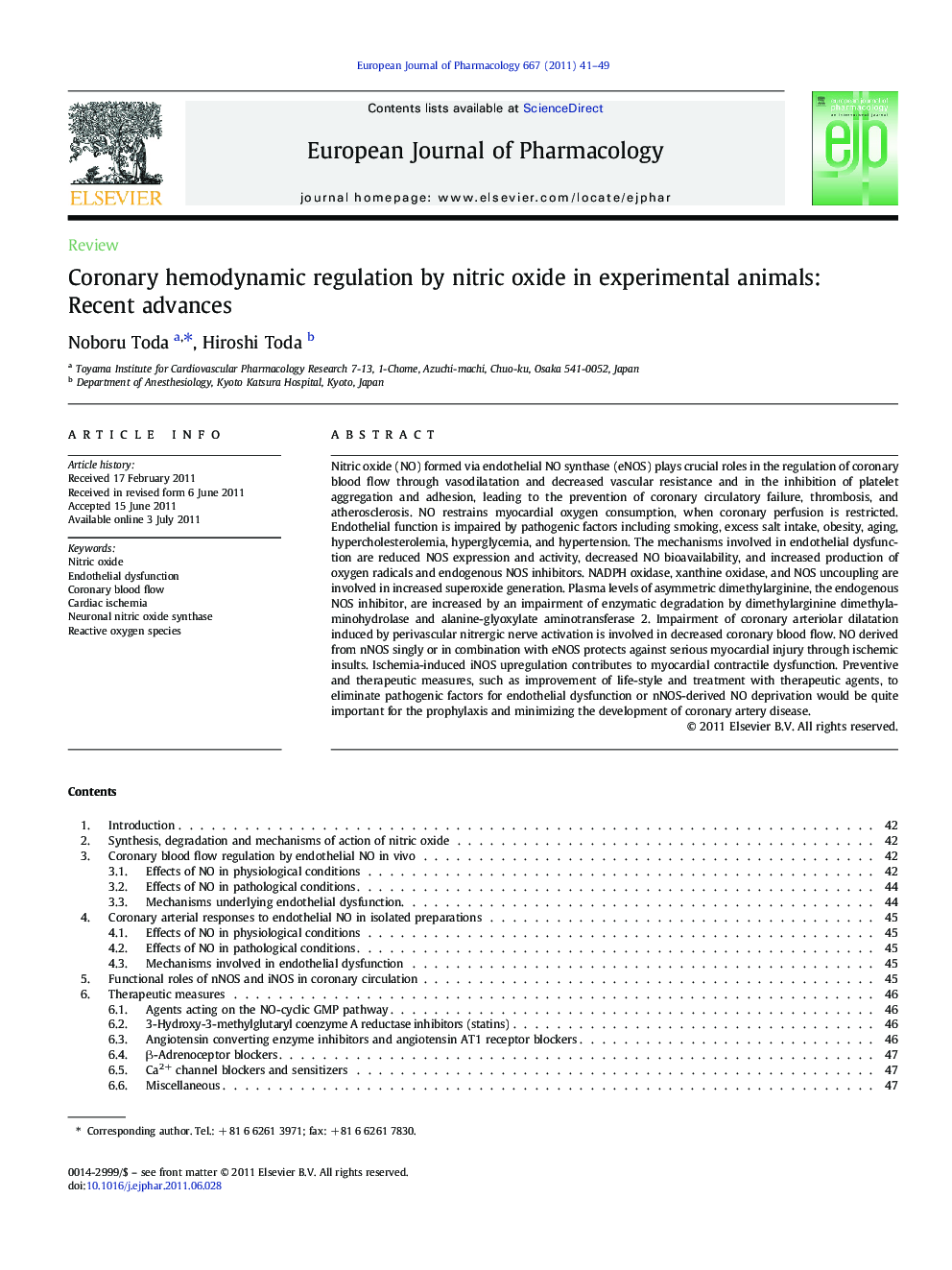| Article ID | Journal | Published Year | Pages | File Type |
|---|---|---|---|---|
| 2532694 | European Journal of Pharmacology | 2011 | 9 Pages |
Nitric oxide (NO) formed via endothelial NO synthase (eNOS) plays crucial roles in the regulation of coronary blood flow through vasodilatation and decreased vascular resistance and in the inhibition of platelet aggregation and adhesion, leading to the prevention of coronary circulatory failure, thrombosis, and atherosclerosis. NO restrains myocardial oxygen consumption, when coronary perfusion is restricted. Endothelial function is impaired by pathogenic factors including smoking, excess salt intake, obesity, aging, hypercholesterolemia, hyperglycemia, and hypertension. The mechanisms involved in endothelial dysfunction are reduced NOS expression and activity, decreased NO bioavailability, and increased production of oxygen radicals and endogenous NOS inhibitors. NADPH oxidase, xanthine oxidase, and NOS uncoupling are involved in increased superoxide generation. Plasma levels of asymmetric dimethylarginine, the endogenous NOS inhibitor, are increased by an impairment of enzymatic degradation by dimethylarginine dimethylaminohydrolase and alanine-glyoxylate aminotransferase 2. Impairment of coronary arteriolar dilatation induced by perivascular nitrergic nerve activation is involved in decreased coronary blood flow. NO derived from nNOS singly or in combination with eNOS protects against serious myocardial injury through ischemic insults. Ischemia-induced iNOS upregulation contributes to myocardial contractile dysfunction. Preventive and therapeutic measures, such as improvement of life-style and treatment with therapeutic agents, to eliminate pathogenic factors for endothelial dysfunction or nNOS-derived NO deprivation would be quite important for the prophylaxis and minimizing the development of coronary artery disease.
